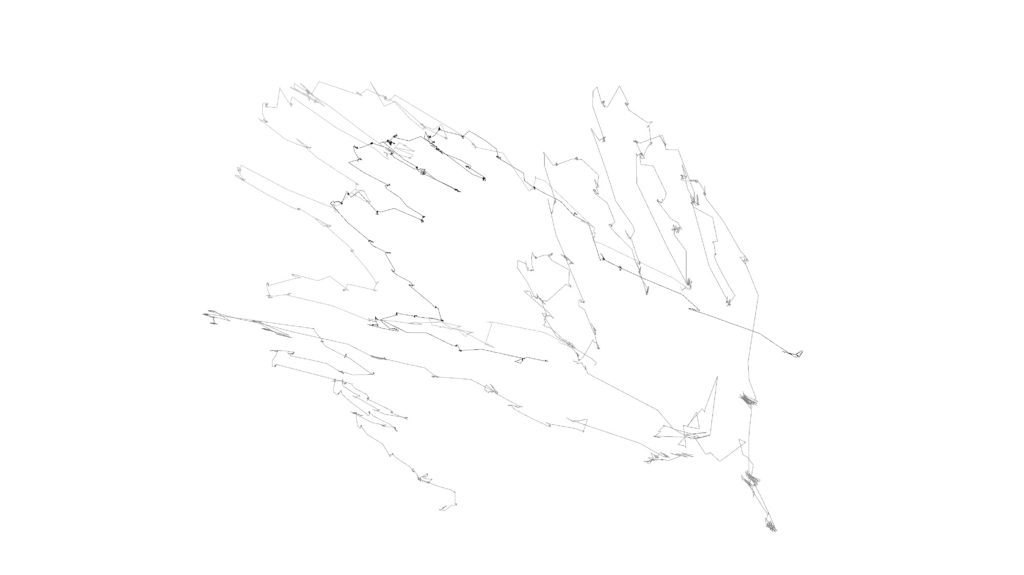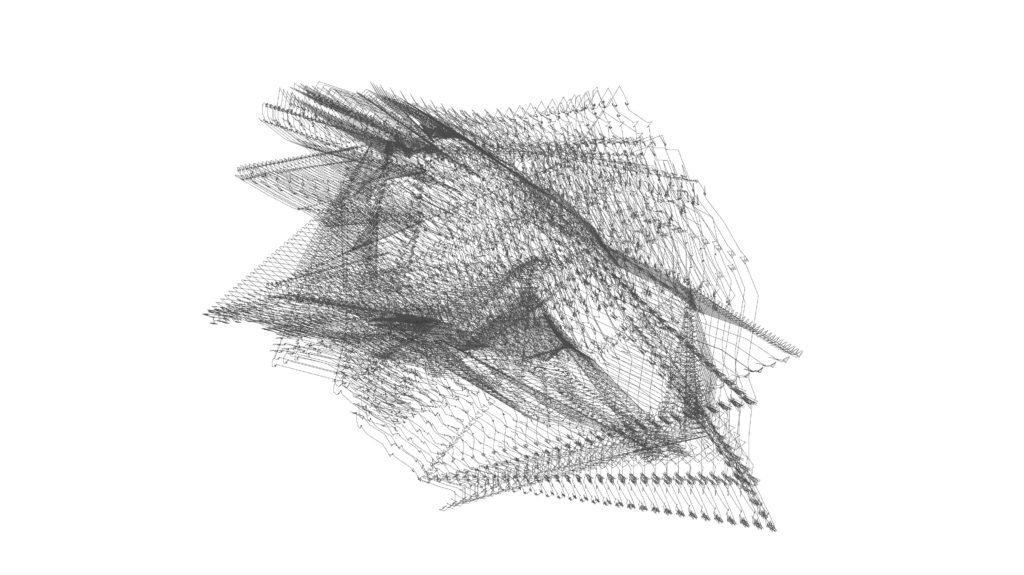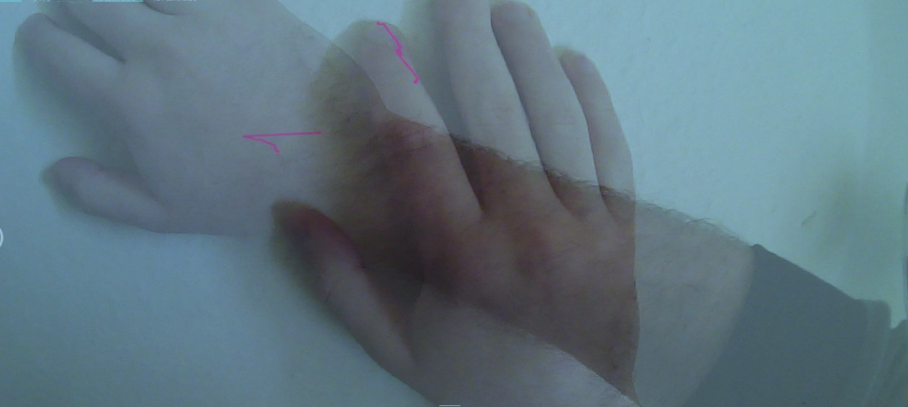
Figure 25: 4 superimposed eye-drawings of my hand as seen from 4 different viewpoints, resulting from the eye drawing session in Figure 28

Figure 26: 30 generative tween curves between every resulting eye-drawing in
Figure 25

Figure 27: Generative stop-motion animation of Figure 26
I can argue that I assimilate two different attitudes while eye drawing. The first concerns the limitation and the restriction of [hand] drawing itself, which is characterised by the restraining (and unconscious snaps) of body gestures; by thinking and concentration; by a specific project of looking and by our innate perceptive mechanisms. It is also an attitude of frustration (as is typical of drawing).
The second attitude is more flexible and concerns the methodology acquired while post-processing is taking place within the virtual plane, which is also technology dependant. To a certain extent, this brings to mind what Dillon states in his essay On Elements of Drawing (2009); “we can no longer draw without a certain self-consciousness regarding the medium itself, and therefore we can [afford to] re-visit its fundamental elements.”
Through the practice of eye-drawing, I am re-visiting fundamental elements of drawing through the primary intention of contouring the world with the eyes (and mind), which is leading me to a process of learning, re-learning and un-learning (not necessarily in this order). I am finding that
one of these fundamental elements concerns the instability of drawing itself, which offers an element of change and fluidity. Eye-drawing is also strictly characterised by [ways of] looking.
I find this to be strongly expressed through the generated drawings between different eye-drawings made from different viewpoints. Figure 25 shows the superimposition of 4 eye-drawings of my right hand, made from four different viewpoints. Figure 28 can give an idea of two different views involved. Figure 26 generates 30 tween curves between each eye-drawing shown in Figure 25; while Figure 27 is a generative stop-motion drawing animation of this hybrid between computer-aided curves and eye-drawings of different viewpoints.
__________
References:
Dillon, B., (2009). On Elements of Line, in The end of the line : Attitudes in drawing. Harbison, I., Dillon, B., Hayward Gallery, Southbank Centre, Middlesbrough Institute of Modern Art, Bluecoat Gallery, . . . Drawing Room. London: Hayward Publishing/Southbank Centre.

Figure 28: A superimposition of two worldview video frames while eye-drawing my hand from different viewpoints